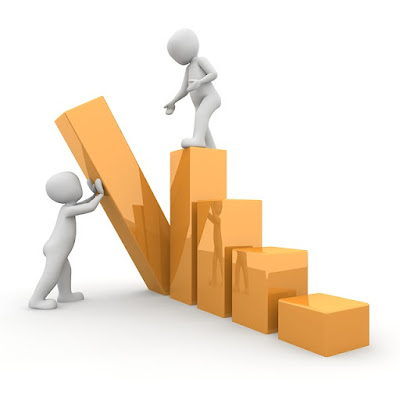BALANCE SHEET
Balance
Sheet: Balance sheet is a financial showing firm’s assets and liabilities at a
given point of time, say 31 march of a year. It tells us about the
financial health of a firm. It tells what the firm owns and what it owes. Whatever
a firm owns are assets and what it owes are liabilities. The difference of assets
and liabilities is called as shareholder’s equity or net assets or owner’s
equity. From this discussion we get the following relation that is
Sheet: Balance sheet is a financial showing firm’s assets and liabilities at a
given point of time, say 31 march of a year. It tells us about the
financial health of a firm. It tells what the firm owns and what it owes. Whatever
a firm owns are assets and what it owes are liabilities. The difference of assets
and liabilities is called as shareholder’s equity or net assets or owner’s
equity. From this discussion we get the following relation that is
 |
| BALANCE SHEET |
Assets – liabilities = owner’s equity. Assets = liabilities + owner’s equity
A balance sheet represents the accounting
balances on assets and liabilities side and not the true value. True value
means that if a firm has purchased a land 20 years before than balance taken in
balance sheet is the amount invested at the time of purchase. The true value of
land at the time of preparation of balance sheet would be much more than the
value of land at its purchase.
balances on assets and liabilities side and not the true value. True value
means that if a firm has purchased a land 20 years before than balance taken in
balance sheet is the amount invested at the time of purchase. The true value of
land at the time of preparation of balance sheet would be much more than the
value of land at its purchase.
Balance
sheet helps us to know the following about the financial health of a firm.
sheet helps us to know the following about the financial health of a firm.
- Solvency
position. It is the capacity of firm to meet its obligations. - Profits made by
the firm in the past and past trends - Credit worthiness.
Balance sheet can be prepared either
in a horizontal format or a vertical format.in case of banking companies the
format of balance sheet is prescribed by the banking regulation act.
in a horizontal format or a vertical format.in case of banking companies the
format of balance sheet is prescribed by the banking regulation act.
Balance
sheet horizontal format
sheet horizontal format
|
LIABILITIES
|
ASSETS
|
|
Owners capital
|
Fixed assets
|
|
Long term liabilities
|
Investments
|
|
Current liabilities
|
Current assets
|
|
|
Non-current assets
|
|
|
Other assets
|
|
|
Intangible assets
|
Components
of balance sheet: components of a balance sheet are given in the table above and described below.
of balance sheet: components of a balance sheet are given in the table above and described below.
LIABILITIES
Owner’s capital: It is the contribution mad by
the owners of the firm. The profit earned and retained is also added under
this. It also includes:
Reserve and surplus: Includes the profit
retained, provisions made for some
retained, provisions made for some
particular purpose.
Share capital money: It is the amount raised
by selling equity above its face value.
by selling equity above its face value.
Share application money: Money intended to be
used for issuance of shares.
used for issuance of shares.
Preferred stock: stock having preference over
common stock during liquidation of
common stock during liquidation of
firm.
Long term
liabilities:
liabilities:
- Liabilities which are to be paid by the firm beyond a repayment period of one year.
- The liabilities may be secured or unsecured.
- These are generally raised to invest in fixed assets like plant and machinery, land and building.
Current
liabilities: Liabilities which are repaid during a period of one year. They
liabilities: Liabilities which are repaid during a period of one year. They
generally
include sundry debtors and other liabilities.
include sundry debtors and other liabilities.
ASSETS
Fixed assets: Investment made in plant and machinery, land and building required to run the
operations of the firm. The investment in these assets is usually made through owners’
equity and long term liability.
operations of the firm. The investment in these assets is usually made through owners’
equity and long term liability.
Investments: Amount invested by the firm in its own subsidiaries or other companies. These
are the financial securities owned by the firm.
are the financial securities owned by the firm.
Non-current
assets: Securities in which the investment done is realized beyond a period of
one year.
assets: Securities in which the investment done is realized beyond a period of
one year.
Current assets: Consists of cash and other sources of fund which gets converted into cash
during one business cycle of the firm. These are 1. Cash 2.Inventory 3. Account receivables.
during one business cycle of the firm. These are 1. Cash 2.Inventory 3. Account receivables.
Intangible assets: Assets like goodwill, copyright etc. whose value is difficult to determine and depends on managements view.